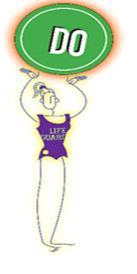
- Do know the load limit or load capacity of every crane on the premises. The load limit is the maximum amount the crane can lift. Lifting more than the load limit can damage the crane and in worst case scenarios cause loads to come crashing down resulting in damage or injuries.
- Do have trained crane operators running cranes. Every crane operator should be trained and experienced and know what they are doing. Have designated crane operators who know what they are doing.
- Do have designated signalers whose job it is to communicate with the crane operator via hand signals, radio or other means. Preferably signalers should be experienced crane operators.
- Do have a means of communication that allows workers on the floor or the ground to talk directly to the crane operator. This can avoid miscommunication and help workers alert the operator of an emergency or potential emergency.
- Do discipline workers who use the crane in any improper or potentially dangerous manner. Let repeat offenders know that if they keep it up they can start looking for another job.
- Do educate workers, especially foremen and supervisors in proper crane safety and operation.

- Don’t ever lift a load that is larger than the load limit with any crane. Even loads that are slightly over the limit can be dangerous. If there is any doubt about a crane’s ability to lift a load, don’t lift that load.
- Don’t let people who know little or nothing about the crane operate it. An inexperienced operator will be more likely to make a mistake that will lead to an accident. Don’t let workers who don’t know how to operate the crane run it.
- Don’t let anybody communicate with the crane operator including those who don’t know what they’re doing. This can lead to mixed signals which will cause accidents.
- Don’t only rely on hand signals to communicate with the crane operator. These can be too slow or easily misconstrued. New or inexperienced workers may not understand hand signals or know how to use them in an emergency.
- Don’t let workers “ride” on the crane unless it has attachments or devices designed specifically to lift or transport people. Workers hanging from the crane could easily fall and get injured.
- Don’t ignore crane safety and proper crane operation until somebody gets hurt or killed.